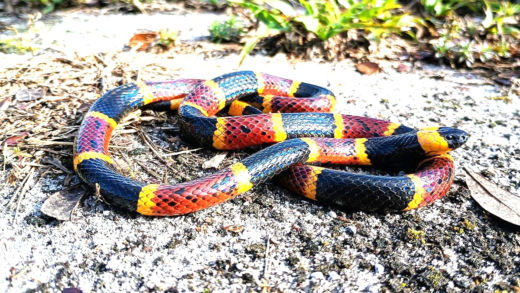The article explores the largest horse breed, the Shire, detailing its traits, historical roles, and interesting facts. It highlights the breed’s evolution, the differences between war and carriage horses, and offers insights on caring for these gentle giants. Additionally, it discusses emerging trends in large horse breeds, emphasizing their therapeutic benefits and sustainable breeding practices.
The Largest Horse Breed: A Title Holder
The largest horse breed in the world is the Shire horse. Known for its impressive height and strength, the Shire horse can stand over 17 hands (68 inches) tall at the withers. These gentle giants are often recognized by their distinctive feathering on their lower legs and their calm temperament, making them popular for both agricultural work and riding.
How Long Has This Breed Held Its Title?
The Shire horse has been regarded as the largest horse breed for centuries. Historical records suggest that this breed has maintained its title since the 19th century, when it was first recognized for its exceptional size and strength. Over the years, Shire horses have played vital roles in farming and transportation, solidifying their status as the largest horse breed.
Traits of Giants: Characteristics of Ancient Large Horse Breeds
Ancient large horse breeds like the Shire were selected for specific traits that suited their roles. These traits include:
- Strength: Large horses were bred for heavy pulling and labor, making strength a critical characteristic.
- Temperament: A calm and gentle nature was essential for working alongside humans and other animals.
- Durability: Ancient breeds needed to withstand harsh conditions, which made hardiness a sought-after trait.
- Height: The towering stature of these horses allowed them to carry heavy loads and navigate challenging terrains.
These traits have not only contributed to their historical significance but also their ongoing popularity among horse enthusiasts today.
Large Horses in History: Their Roles in Battles
The largest horse breed, the Shire, has a fascinating history tied to warfare. Throughout the ages, large horses played significant roles in battles, serving as mounts for knights and soldiers. Their size and strength made them ideal for carrying heavy armor and weapons. Notably, war horses were essential in cavalry charges, where their power could break enemy lines.
Some key roles of large horses in battles included:
- Cavalry Support: Large breeds were often used as cavalry mounts, providing mobility and strength in combat.
- Logistical Transport: They carried supplies and equipment, ensuring armies were well-supplied during campaigns.
- Intimidation Factor: The sheer size of these horses could intimidate opposing forces, giving a psychological edge in battle.
For centuries, large horses have been a cornerstone in military strategy, showcasing their importance on the battlefield.
War Horses vs. Carriage Horses: Understanding the Differences
When discussing large horse breeds, it’s essential to differentiate between war horses and carriage horses. Each type has distinct characteristics tailored to their specific roles. War horses were bred for combat, emphasizing agility and strength, while carriage horses were developed for transportation and comfort.
Key differences include:
- Purpose: War horses were trained for battle and agility, while carriage horses focused on pulling carts and providing a smooth ride.
- Training: War horses underwent rigorous training to handle the chaos of battle, whereas carriage horses were trained for steadiness and obedience.
- Build: War horses typically possess a more muscular build for endurance in combat, while carriage horses may have a stockier, more robust appearance for pulling loads.
Understanding these differences highlights the specialized roles large horses have played throughout history.
The Evolution of Large Horse Breeds: A Journey with Humans
The evolution of large horse breeds is closely intertwined with human development. As societies evolved, so did the needs for horses. From ancient times, humans selectively bred large horses for various tasks, adapting them to suit agricultural, military, and transportation needs.
Some notable evolutionary points include:
- Breeding Practices: Early humans bred large horses for size and strength to assist in farming and transport.
- Adaptation to Roles: Over time, breeds adapted to specific tasks, with some focusing on speed and others on strength.
- Modern Developments: Today, selective breeding continues, with a focus on enhancing desirable traits while maintaining health and temperament.
This evolution showcases the dynamic relationship between humans and large horse breeds, leading to the majestic Shire and others we know today.
Interesting Facts: Discovering the World’s Largest Horse Breeds
The largest horse breed, the Shire, boasts some fascinating facts that highlight its uniqueness. For instance, did you know that Shire horses can weigh over 2,000 pounds? This hefty size is not just for show; it provides them with the strength needed for heavy agricultural work. Additionally, Shires are known for their incredible endurance, allowing them to work long hours without tiring. Another interesting aspect is their feathering – the long hair on their lower legs, which not only adds to their charm but also helps protect their legs from mud and debris.
Moreover, Shire horses have contributed to various fields beyond agriculture. They have been featured in movies and shows, showcasing their majestic stature. They are also popular in parades due to their impressive appearance. With their gentle disposition, Shires make excellent therapy animals, bringing comfort to those in need. These unique traits make the Shire not just the largest horse breed, but also one of the most beloved.
The Future of Giants: Trends in Large Horse Breeds
The future of large horse breeds like the Shire seems bright, with several emerging trends shaping their development. One significant trend is the increasing popularity of these breeds in recreational riding and therapeutic programs. Many enthusiasts appreciate the calm nature of large horses, making them suitable for novice riders and therapy settings.
Additionally, there is a growing focus on sustainable breeding practices. Breeders are now more conscious of the health and well-being of the horses, emphasizing genetic diversity and health screening to prevent hereditary issues. This approach not only improves the quality of life for these majestic animals but also enhances their performance and longevity.
Moreover, as more people become interested in equine sports, large horse breeds are finding their place in various competitive arenas, including dressage and show jumping. These trends indicate that large horses will continue to thrive, adapting to modern needs while retaining their historical significance.
Care for Giants: Properly Caring for Large Horse Breeds
Caring for large horse breeds like the Shire requires specific knowledge and attention to detail. First and foremost, diet plays a crucial role. Large horses need a balanced diet that includes ample hay, grains, and fresh water to maintain their health. Because of their size, they are also prone to certain health issues, so regular veterinary check-ups are essential.
Additionally, grooming is vital for these magnificent animals. Regular brushing helps to keep their coats healthy and free of debris. Special attention should be given to their feathering, which requires thorough cleaning to prevent mud build-up and potential skin issues.
Lastly, exercise is fundamental. Although large horses are strong, they need regular physical activity to stay fit and happy. Daily turnout in a spacious paddock is recommended, allowing them to move freely and socialize with other horses. By understanding and meeting these care requirements, owners can ensure their large horses live long, healthy lives.





Comments are closed.